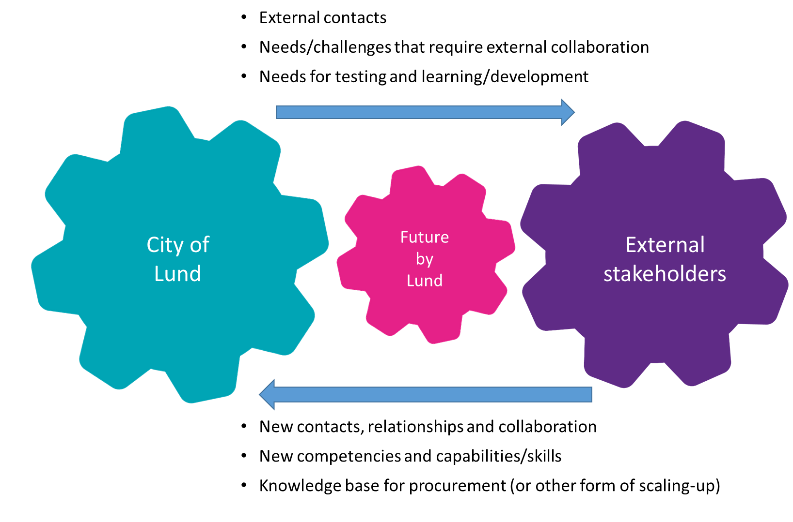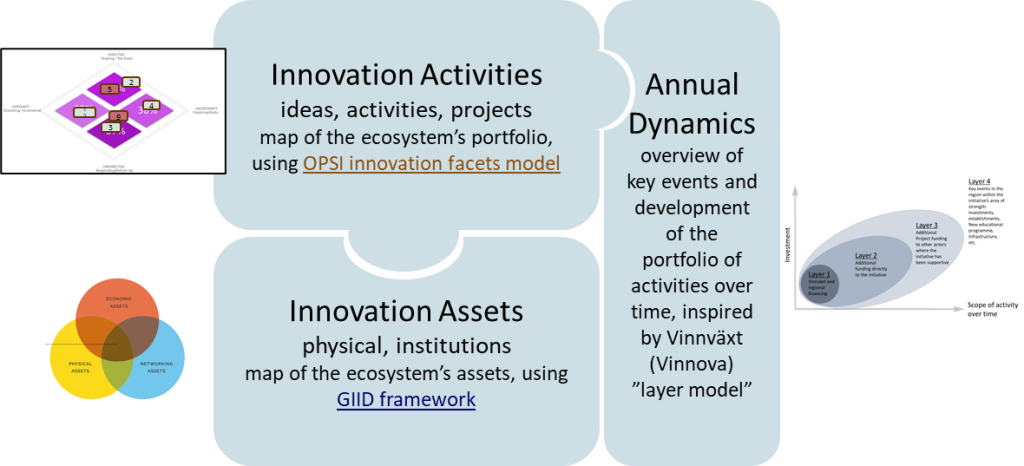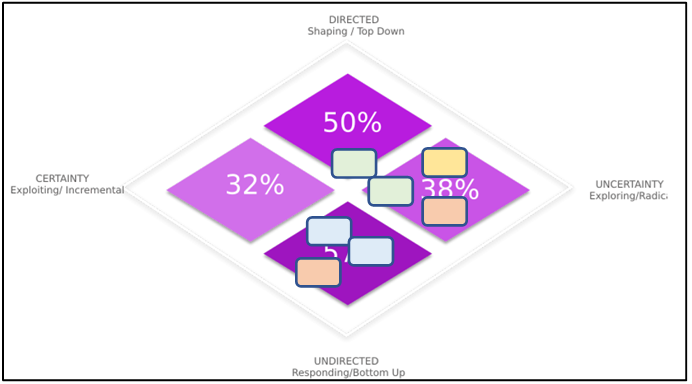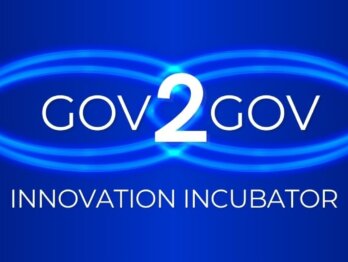Stewarding innovation portfolios for the ecosystem: catalysing collective system change

Editor’s note: This is a guest blog written by Emily Wise, Lund University action researcher for Future by Lund, Sweden. Lund municipality’s innovation platform, Future by Lund works to catalyse development activities for sustainable cities – addressing complex challenges through collective action. Leveraging insights from OPSI’s innovation facets model (among others), the Future by Lund team is currently experimenting with new ways to steward and advance a portfolio of collaborative innovation activities – an innovation portfolio for the ecosystem.
An innovation platform approaching a new phase of development
Future by Lund (FBL) is an innovation platform located in the city of Lund, in southern Sweden. The municipality of Lund spearheads this collaborative effort (with more than 50 partners) to catalyse innovative solutions for sustainable and attractive cities and to strengthen the innovation culture of the ecosystem in Lund. Since its start in 2013, FBL has developed its system leadership function – scouting trends and identifying opportunities, matching relevant actors and catalyzing collaborative action, and developing a community of actors (companies, universities, research institutes, innovation support actors) and portfolio of activities that (collectively) contribute to a more sustainable and attractive city. For instance, FBL gathered a group of actors and facilitated initial activities to develop an electric road – moving from idea to national demonstrator over the course of six years. FBL played a similar “initial catalyst” role in developing a new energy solution – Ectogrid.
FBL is one of six innovation platforms supported through a programme at Sweden’s innovation agency – Vinnova, which is soon coming to its end. The funding and other support from Vinnova have helped FBL build its capacity to proactively foster innovation activities that respond to challenges and sustainable development aims that can only be addressed in collaboration with others – operating in between municipal and other organisational mandates, in the more exploratory, uncertain, and bottom-up areas of innovation activity (see figure below).

As the Vinnova programme nears its end, one of the main tasks is to establish an organisational “home” and governance mechanisms that will enable the platform to continue and build on the results achieved. A key challenge is to coordinate a portfolio of innovation activities across multiple organsiations, actor groups, and thematic boundaries, as well as to facilitate the strategic development of the portfolio over time. Some of the questions that have been raised in relation to this include:
- How can we develop clearer structures or processes to identify common problems and opportunities for collective action?
- How can we more concretely show the collective results and contributions to system-level change over time?
- How can we more clearly communicate the collective assets, portfolio of activities, and the strength of the innovation ecosystem in Lund – to benchmark/learn and develop stronger international visibility?
Developing a new framework for following progress, leveraging processes for collective direction-setting and reflection
Over the years, FBL has engaged with other communities of innovation practice (including OECD’s Observatory for Public Sector Innovation – OPSI, the Global Institute of Innovation Districts – GIID, and other innovation ecosystems in Sweden and internationally) to get inspiration and learn from their approaches and governance models. Based on insights and practical tests of various models and mechanisms, FBL has arrived at its own approach to address the various questions about its future governance. The proposed framework (under development) combines aspects of three existing models:
- A snapshot of key innovation assets (e.g. physical infrastructure, knowledge/skills and inter-linkages) – using the GIID framework and indicators for assessing (and benchmarking) innovation ecosystem assets.
- An overview map of the portfolio of various actors’ innovation activities (existing ideas or ongoing developments that are viewed as important and where collaboration with others is essential) – using (and building on) OPSI’s innovation facet model and portfolio exploration tool
- A formative/developmental evaluation approach to tracking annual dynamics and system change over time (regularly documenting project funding and key events) – using the “layer model” aspect of annual reporting procedures within Vinnova’s Vinnväxt programme
Together, these three elements (see figure below) provide a structured approach for documenting and communicating the collective assets and activities of the ecosystem, for conducting strategic dialogues together with stakeholders – involving them in direction-setting and reflective learning processes, and for tracking progress in the collective efforts to shift the portfolio and upgrade the innovation ecosystem over time.

Stewarding innovation portfolios for the ecosystem – an important piece of the puzzle
An important element of the proposed approach is developing a more holistic overview of the portfolio of innovation activities (across organisations, and across different focus areas: Digital Cities and Citizens, Moving Things and People, Future Living and Spaces, Creatives and Changemakers, and Ideas for Society), and developing structured processes for collective prioritisation and action:
- What activities should be scaled up or handed over?
- What new activities are on the horizon?
- Where should stakeholders’ time and financial investments be focused?
For this, FBL plans to initiate a process with its partners to begin mapping out an overview of the innovation activities of a group of organisations – using OPSI’s innovation facets model as the common vocabulary and the canvas for visualising the innovation portfolio for the ecosystem (see hypothetical innovation portfolio mapping for multiple organisations below). Many FBL partners see the need and the benefit of working together to address complex challenges – as no ONE organisation can deliver a new system solution by themselves. However, it is difficult for the FBL team to help different organisations zoom out and broaden their perspective of the portfolio of innovation activities – not only to see gaps or opportunities for collaborative action, but also to agree on steps to advance system change processes.

This co-created overview of the innovation portfolio will then be used as a base for highlighting shared areas of interest, identifying gaps or potential new areas for development of the portfolio, and for discussing priorities for future collaborative action. By developing an overview of the innovation portfolio for a broader group of actors and facilitating collective processes for reflection, sensemaking and priority setting, it is hoped that FBL can develop a more structured approach for visualising and following the activities of the ecosystem, as well as for leading system change in a collaborative way.
Peer experiences with stewarding innovation portfolios for ecosystems?
Most models of public sector innovation management are based on single organisations with clear mandates to guide action. However, public sector organisations are not able to address our societies’ most pressing challenges by themselves. Rather, many organisations (public sector, private sector and academic institutions) need to share the responsibility and act together to achieve the desired aims for the future.
The FBL innovation platform works to catalyse ideas and action in the area in between organisational mandates – stewarding innovation portfolios for the broader ecosystem. This role is not typical for municipal organisations in Sweden, and working practices continue to evolve. Please contribute to the conversation; add your thoughts and comments below.
Editor’s note: To learn more about portfolio approaches in Lund and elsewhere, register for OPSI’s upcoming webinar on 27 May.












